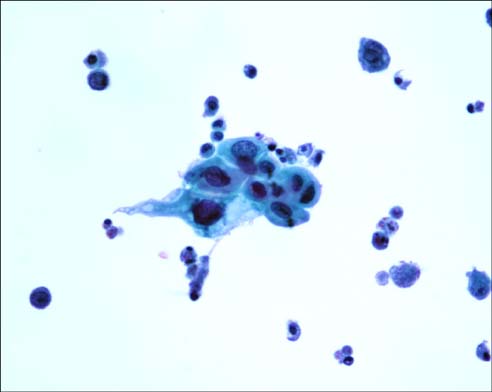Korean J Urol.
2014 Dec;55(12):844-846. 10.4111/kju.2014.55.12.844.
Radiofrequency-Treated Recurrence of Urothelial Carcinoma of the Upper Urinary Tract After Nephroureterectomy
- Affiliations
-
- 1Department of Urology, Fuenlabrada Universitary Hospital, Madrid, Spain. robersescu@hotmail.com
- 2Department of Radiology, Fuenlabrada Universitary Hospital, Madrid, Spain.
- KMID: 2070101
- DOI: http://doi.org/10.4111/kju.2014.55.12.844
Abstract
- Local recurrence after radical nephroureterectomy (RNU) owing to urothelial carcinoma of the upper urinary tract is rare. The usual treatment is systemic chemotherapy followed by optional resection of the mass. We introduce the case of a 73-year-old male patient with multiple comorbidities in whom retroperitoneal carcinoma recurrence of 31 mm was diagnosed via positron emission tomography-computed tomography scan with 18-fluorodeoxyglucose about 5 years after he had undergone RNU owing to urothelial carcinoma of the upper urinary tract. The patient was treated with computed tomography-guided percutaneous radiofrequency ablation. Later scans with contrast controls showed lack of contrast uptake and a decrease of the lesion's size. Twenty-four months after the procedure, the patient is free of the disease. To date, this is the first case of recurrence of urothelial carcinoma that was treated with percutaneous radiofrequency ablation, thus establishing an alternative to chemotherapy in patients with substantial comorbidities.
MeSH Terms
Figure
Reference
-
1. Jeldres C, Sun M, Isbarn H, Lughezzani G, Budaus L, Alasker A, et al. A population-based assessment of perioperative mortality after nephroureterectomy for upper-tract urothelial carcinoma. Urology. 2010; 75:315–320.2. Hall MC, Womack S, Sagalowsky AI, Carmody T, Erickstad MD, Roehrborn CG. Prognostic factors, recurrence, and survival in transitional cell carcinoma of the upper urinary tract: a 30-year experience in 252 patients. Urology. 1998; 52:594–601.3. Rassweiler JJ, Schulze M, Marrero R, Frede T, Palou Redorta J, Bassi P. Laparoscopic nephroureterectomy for upper urinary tract transitional cell carcinoma: is it better than open surgery? Eur Urol. 2004; 46:690–697.4. Hattori R, Yoshino Y, Gotoh M, Katoh M, Kamihira O, Ono Y. Laparoscopic nephroureterectomy for transitional cell carcinoma of renal pelvis and ureter: Nagoya experience. Urology. 2006; 67:701–705.5. Remzi M, Shariat S, Huebner W, Fajkovic H, Seitz C. Upper urinary tract urothelial carcinoma: what have we learned in the last 4 years? Ther Adv Urol. 2011; 3:69–80.6. Childs MA, Wood CG, Spiess PE, Debiane LG, Hernandez M, Matin SF, et al. Early results of chemotherapy with retroperitoneal lymph node dissection for isolated retroperitoneal recurrence of upper urinary tract urothelial carcinoma after nephroureterectomy. Can J Urol. 2010; 17:5184–5189.7. Sweeney P, Millikan R, Donat M, Wood CG, Radtke AS, Pettaway CA, et al. Is there a therapeutic role for post-chemotherapy retroperitoneal lymph node dissection in metastatic transitional cell carcinoma of the bladder? J Urol. 2003; 169:2113–2117.8. Abe T, Shinohara N, Harabayashi T, Sazawa A, Maruyama S, Suzuki S, et al. Impact of multimodal treatment on survival in patients with metastatic urothelial cancer. Eur Urol. 2007; 52:1106–1113.9. Lehmann J, Suttmann H, Albers P, Volkmer B, Gschwend JE, Fechner G, et al. Surgery for metastatic urothelial carcinoma with curative intent: the German experience (AUO AB 30/05). Eur Urol. 2009; 55:1293–1299.10. Zagoria RJ, Pettus JA, Rogers M, Werle DM, Childs D, Leyendecker JR. Long-term outcomes after percutaneous radiofrequency ablation for renal cell carcinoma. Urology. 2011; 77:1393–1397.
- Full Text Links
- Actions
-
Cited
- CITED
-
- Close
- Share
- Similar articles
-
- Anterior Urethral Recurrence from an Upper Urinary Tract Urothelial Tumor
- Urothelial Tumors of the Upper Urinary Tract: Multiplicity and Prognostic Variables
- Pathologic Features of Recurrent Bladder Tumors after Upper Urinary Tract Transitional Cell Carcinoma
- Urothelial Tumors of the Upper Urinary Tract, 15 Cases
- Identification of Significant Prognostic Tissue Markers Associated with Survival in Upper Urinary Tract Urothelial Carcinoma Patients Treated with Radical Nephroureterectomy: A Retrospective Immunohistochemical Analysis Using Tissue Microarray




